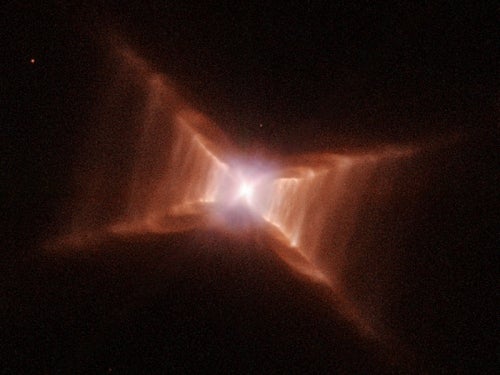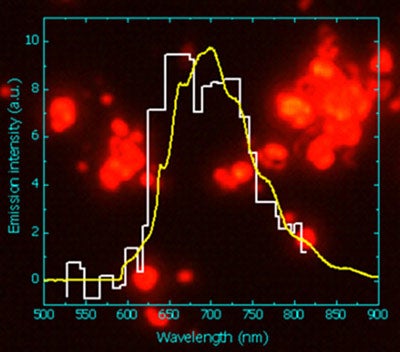A faint, reddish glow called the Extended Red Emission (ERE) pervades space’s dustiest places. Astronomers have found the diffuse light in reflection, emission, and planetary nebulae; in the solar system’s high-latitude “cirrus” dust clouds; in galaxies M82 and the Evil Eye (NGC 4862); and in the Milky Way’s diffuse interstellar gas.
Astronomers have puzzled over the phenomenon for more than 3 decades. Now, a team led by Huan-Cheng Chang of Taiwan’s Academia Sinica claims the glow comes from nanodiamonds in space.
ERE spans a broad wavelength range (500 to 1,000 nanometers) and occurs in places flooded with ultraviolet light. These hints led astronomers to believe the glow arises when energetic photons strike a semiconducting material, which then emits red light through a process called photoluminescence.
Astronomers lined up several suspects — molecules like polycyclic aromatic hydrocarbons or nano-scale bits of silicon — but none quite worked. Yet the substance, whatever it is, must be widespread because ERE is so prevalent.
The team first blasted the diamonds with a beam of protons to create defects in the crystals. They then heated the diamonds to 1,470° F (800° C) to simulate conditions in space. When yellow and blue light shone on the particles, they emitted a glow strikingly similar to ERE.
In 1975, astronomers first found ERE in the Red Rectangle, an X-shape protoplanetary nebula in Monoceros. The glow produced in the team’s experiments strongly resembles spectra from the Red Rectangle and the planetary nebula NGC 7027 in Cygnus. Moreover, both nebulae are rich in carbon, and diamond is a pure-carbon substance. Taken together, say the researchers, diamond is a strong contender for ERE’s source.
Scientists can synthesize artificial nanodiamonds under low pressure using techniques that deposit chemical vapor on surfaces — conditions thought to be similar to those in the stellar winds of old stars. Chang and his team believe diamonds form near old stars and subsequently drift into interstellar space on stellar outflows. As the nanodiamonds travel the galaxy, they absorb diffuse starlight and undergo luminescence, emitting ERE. Because these particles have been recovered from meteorites, at least some stellar diamonds must have populated the nebula that gave rise to the Sun and planets.
Diamonds, it seems, are forever.











